Search Results
Follow-Up Care
Follow-up care is important with both aggressive and indolent forms of NHL because if the disease recurs, curative options are still available for many people. Follow-up care needs to be individualized and should be based on several factors, including how the disease initially manifested. Patients who are in remission should continue to be monitored by clinical assessment as determined by their doctor. In the past, computed tomography (CT) scans or other diagnostic imaging were done routinely in an attempt to detect relapse.
Relapsed and Refractory
Most patients with classical HL are cured by their initial (first-line) treatment. However, in a significant percentage of patients—especially those with advanced stage HL—the disease relapses or is refractory.
- Relapse means the disease comes back after a remission following treatment.
- Refractory means the disease has not responded to treatment.
For these patients, HL is still potentially curable.
Prognostic Factors
Prognosis is the likely outcome of a disease along with the chance of recovery or recurrence. Hodgkin lymphoma (HL) cases are generally classified into the three subgroups described below.
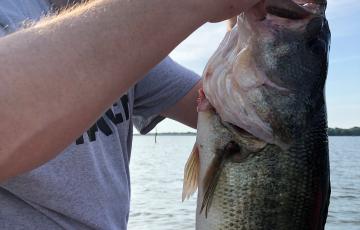
Bradley
I was diagnosed with mantle cell lymphoma (MCL) on February 13, 2017. I went to MD Anderson since I was already living in Houston, Texas. I was a pastor and counselor for 24 years. I was able to use my counseling skills with other patients as I was going through my inpatient treatment. I introduced patients to The Leukemia & Lymphoma Society (LLS) and AFLAC, as well as provided a listening ear. My life was not without troubles. My brother took his life the same day as my diagnosis. After my first relapse, my wife of 24 years passed from stomach cancer in May 2019.
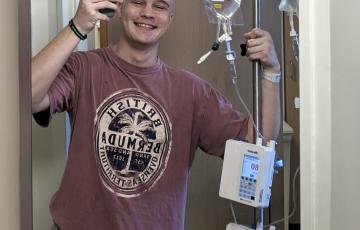
Dane
I was diagnosed with stage 3 diffuse large B-cell lymphoma (DLBCL) in the summer before my senior year of high school in 2020. It was a tough adjustment dealing with the treatment and the aftereffects of treatment while going into my final year of high school. A relatively carefree life was upturned in an instant, and I was presented with new challenges of balancing my new condition with the social and educational challenges that the final year of high school posed.
Lo
I was diagnosed with stage 3 Hodgkin lymphoma (HL) in February 2022. I endured six months of chemotherapy and relied on my girlfriend to be my caregiver. I faced many setbacks including remaining neutropenic for the majority of my treatment. This meant staying home 24/7 despite going to the hospital and spending a lot of time online.
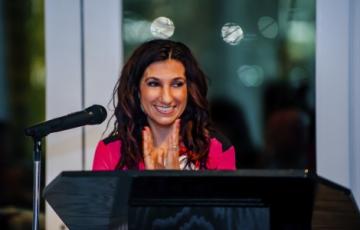
Shar
For the past nine years as a physician assistant, I have had the privilege of taking care of acute leukemia, high-risk lymphoma and bone marrow transplant patients at the Intermountain Blood and Marrow Transplant Program. Throughout my years at this job, I have seen the struggles patients and their families face once they’ve been told “you have cancer.” I've enjoyed being an important part of our patients’ medical team, helping them heal physically and emotionally, but I wanted to do more.

Bruce
I was diagnosed with mantle cell lymphoma in August 2019 at age 64. It was an accidental find while scanning for a kidney stone. I was late stage 3 at diagnosis with no prior symptoms.
I had 4 rounds of R-DHAX finishing at the end of 2019 and followed with an autologous stem cell transplant at the University of Virginia on February 24, 2020. Along the way I had a life threatening duodenal ulcer (Oscar) as a result of the R-DHAX treatment.

Miguel
Miguel was diagnosed with Non-Hodgkin lymphoma in 2017. He was an active, healthy man all his life so this came as a total shock. We didn't know what to expect or what the outcome would be and we were both beyond devastated.
As being inquisitive is my nature, I gathered all the information I could and became extremely proactive in my husband's care and my determination to get him healed from this disease. Giving up was NOT an option for either of us.
Dianne
When I was a little girl, I knew I wanted to be a nurse so I could help people. I did become a registered nurse, predominately in critical care settings. So, when you receive a disease diagnosis, you treat the problem…right? Not necessarily I have learned.
I was recently diagnosed with non-Hodgkin lymphoma (NHL). I felt as if I was tumbling down a dark, hot hole. “Not curable, treatable, lifelong”. This is “watch and wait” protocol diagnosis…an overwhelming concept…”watch and worry”, I was told, was another concept.
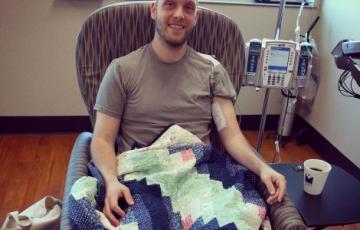
Christian
In March 2017, I was diagnosed with Hodgkin's Lymphoma.
This came as a huge shock. I immediately starting thinking about how this might impact my wife and our two young daughters' lives.
I had 2.5 cycles of ABVD and ISRT radiotherapy and have been in remission since August 2017. I couldn't have down it without the support of my family, friends, LLS.org support groups and even the ice hockey team I had to stop playing with, who sported violet stick and shin guard colored tape when playing the rest of the season.
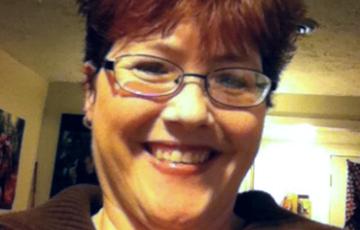
Shelley
Shelley was diagnosed with B-cell lymphoma in September of 2010 after finding a lump behind her ear. Testing showed she was in stage 3 and had a tumor in her large intestine. Her doctors went before the tumor board, where several other medical experts reviewed her options, to determine whether she should have surgery or chemotherapy. Approximately two weeks later she ended up having emergency open colon surgery and surgeons found another tumor blocking her small intestine.
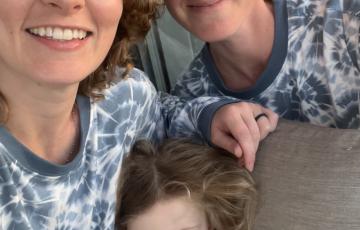
Kimberly
My wife was in the thick of her emergency medicine residency when life threw us a curveball — she was unexpectedly diagnosed with Hodgkin lymphoma (HL). In the middle of 24-hour shifts, parenting our three-year-old, and studying for boards, she now had to face chemotherapy too.

Becky
In 2019, I was diagnosed with T-cell lymphoma (TCL). In 2021, I had a stem cell transplant. As of November 23, 2023, I am cancer-free.
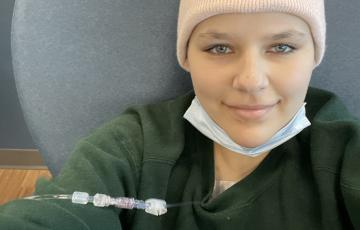
Grace
On February 6, 2023, I was diagnosed with stage 3 Hodgkin lymphoma (HL). However, my story starts months before that. I was attending my sophomore year of college at my university when I started experiencing symptoms I did not understand or put together. I started experiencing extreme exhaustion, I was dropping weight very fast, and I was always lightheaded. I decided to come home only three weeks into my spring semester because I couldn’t keep up my course load with how bad I was feeling.

Melissa
I want to tell you about my hero, my wife, Melissa. She is service-focused from the time she gets out of bed until the time she returns. She's been a part of Team In Training for the past three years and has raised well into five figures to help others. That's what made her Hodgkins lymphoma diagnosis all the more ironic.

Lauren
My name is Lauren, I'm 20 years old and I am a lymphoma survivor. The summer after graduating high school, I began to develop symptoms consisting of a dry cough, a lump under my arm and shortness of breath.
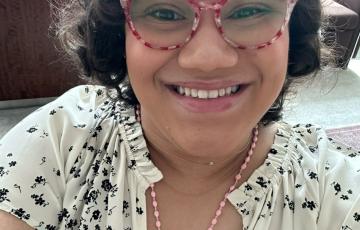
Daphne
I was diagnosed with stage 4 Hodgkin lymphoma (HL) in July 2022 after two years of being sick. I underwent 12 rounds of AAVD chemotherapy for six months. It was a difficult journey, but I had an amazing oncology team who let me be actively involved in my treatment. I was born disabled and have had a lot of experiences in hospitals. So, I thought I would be prepared for this journey. I was wrong. I was only 24 years old when I got diagnosed, and I felt like I had my whole life ahead of me. As an advocate for environmental issues, I was used to traveling and working non-stop.
Clinical Trials
Taking part in a clinical trial may be the best treatment choice for some acute myeloid leukemia (AML) patients. Clinical trials are under way for patients at every treatment stage and for patients in remission. Today's standard treatments for cancer are based on earlier clinical trials. The Leukemia & Lymphoma Society continues to invest funds in AML research.
Click here to read more about clinical trials.
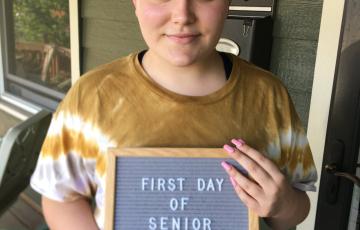
Madeleine
We were lucky. It seems strange to frame it that way, but it's true.
Daniel
I was diagnosed with chronic lymphocytic leukemia (CLL) in March 2010 at the age of 48. The cancer advanced rapidly and I was treated with a fludarabine/cyclophosphamide/rituximab (FCR) regimen at MD Anderson in Houston and locally in my hometown of Raleigh, NC between January and July of 2011. The treatment achieved a partial remission. However, in September of the same year I was diagnosed with a large diffuse b-cell lymphoma tumor in my lung.
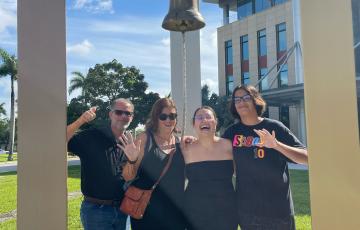
Sofia
As a five-year survivor of Hodgkin lymphoma (HL), I have come to truly appreciate the value of life's opportunities and the importance of being fully present in every moment. My battle against cancer has shaped me into a determined and compassionate individual, instilling in me a deep sense of empathy for others facing similar challenges. I am grateful to have been awarded a scholarship for cancer survivors by The Leukemia & Lymphoma Society (LLS), recognizing both my journey and my aspirations.
Jessica
Two years after surviving a massive heart attack, a heart transplant and a leg amputation at age 16, Jessica found a lump on her neck and was diagnosed with non-Hodgkin lymphoma (NHL). After months of treatment, her cancer was in remission.
Six years later, Jessica found another lump which out to be a different form of NHL. She told herself she'd been through cancer once before and there was no reason she couldn't beat it again. By January 2008, she was back in remission and finished treatment that following May.

Brice
I discovered a small painful lump under my armpit area so I went to the doctor and I was given antibiotics for an infected lymph node. A few months later, I noticed the lump had grown larger so I scheduled another doctor appointment.
My doctor ordered blood tests and an ultrasound which was followed up with a biopsy. I was diagnosed with anaplastic large cell lymphoma (ALCL) on October 24, 2016. ALCL is a rare type of non-Hodgkin's lymphoma.
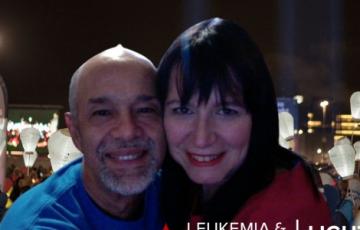
Marie
In early 2017 we found out my husband Miguel had non-Hodgkin's lymphoma diffuse large B-cell. It was the most frightening and overwhelming time of our lives. To this day I am amazed at how we got through it.